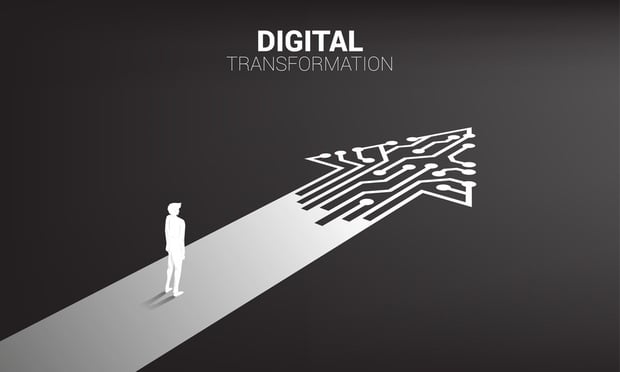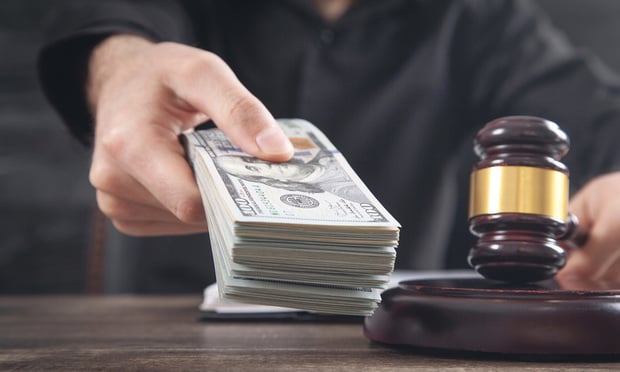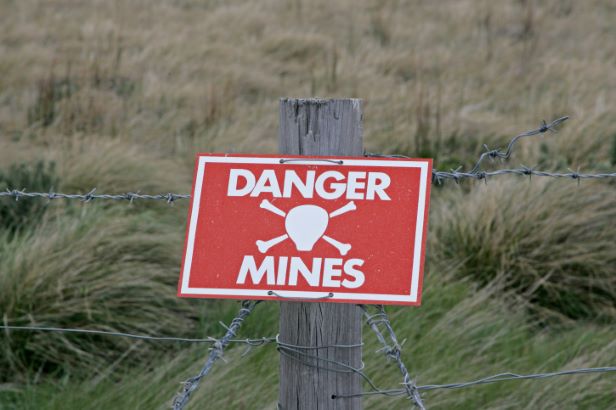Features

Following Uptick In 2023, Bankruptcy Lawyers Are Expecting a Busy 2024
Predictions of an uptick in bankruptcy filings came true this year, and bankruptcy lawyers are expecting a steady continuation into 2024, with the use of alternative approaches continuing to increase.
Features

The Bankruptcy Strategist Is Going Digital Only. Here's What You Need to Know.
The final print edition of The Bankruptcy Strategist will be our January issue.
Features

Litigation Finance Offers Significant Benefits for Restructuring Matters
In today's volatile economic climate, companies need to be more creative to find ways to mitigate risk. Litigation finance is one of those out-of-the-box solutions that can provide benefits.
Features

Key Win Likely for Commercial Shopping Center Lessor In Second Circuit
The Second Circuit, on remand from the U.S. Supreme Court, further remanded to the district court the key issue of whether the Chapter 11 debtor gave "adequate assurance of future performance of" a commercial real property shopping center lease "as required by [Bankruptcy Code] §365(b)(3)(A)," after the debtor's assignment of its lease.
Features

CA Bankruptcy Court Throws Regulatory Concerns Aside and Sides With Cannabis Business' Chapter 11 Plan
While this case does not fully open the courthouse doors to cannabis-related businesses and seemingly grants the bankruptcy courts a great deal of discretion when ruling on similar cases in the future, cannabis-related businesses may now have a roadmap to pursue reorganization.
Features

Fifth Circuit: Pre-petition Payout of Insurance Proceeds Should Be Classified As a 'Transfer of An Interest'
In upholding the bankruptcy court's determination that the payment of insurance proceeds could be such a transfer, the Fifth Circuit underscored the complex interplay between state law, bankruptcy law and the rights of creditors in bankruptcy proceedings.
Features

A Look Inside the Rulings for Sandy Hook Families In Alex Jones Bankruptcy
A Q&A with the team working on the Alex Jones/Sandy Hook case in bankruptcy court in Texas, who provides an inside look at the case, their strategy, and some takeaways.
Features

Online Extra: WeWork Creditors Likely to Attempt to Pierce Corporate Veil In Bankruptcy Court
WeWork's Chapter 11 bankruptcy has stayed a Manhattan Commercial Division decision allowing plaintiffs to dig around in 11 years of the tanked company's finances — but observers say it's likely creditors will now try to pierce the corporate veil in the bankruptcy proceeding.
Features

Landmines In Bankruptcy Appellate Practice
Pundits are raving about the current increase in business bankruptcy cases. But they rarely, if ever, mention the spike in bankruptcy appeals. A brief survey of recent decisions shows that appellate courts are, among other things, finding ways to (a) avoid making decisions or to (b) avoid litigation delay and uncertainty by expediting appellate review. Practitioners can avoid surprises by grasping what these courts are actually doing.
Features

Appointment of Receiver Under State Law No Assurance Receiver Will Stay If Ch. 11 Filed
Many clients are not aware that the Bankruptcy Code provides that, upon the filing of a bankruptcy case, the receiver is required to give back possession of the mortgaged property to the debtor unless the lender obtains an order from the Bankruptcy Court excusing the receiver from this requirement.
Need Help?
- Prefer an IP authenticated environment? Request a transition or call 800-756-8993.
- Need other assistance? email Customer Service or call 1-877-256-2472.
MOST POPULAR STORIES
- The DOJ's New Parameters for Evaluating Corporate Compliance ProgramsThe parameters set forth in the DOJ's memorandum have implications not only for the government's evaluation of compliance programs in the context of criminal charging decisions, but also for how defense counsel structure their conference-room advocacy seeking declinations or lesser sanctions in both criminal and civil investigations.Read More ›
- The DOJ's Corporate Enforcement Policy: One Year LaterThe DOJ's Criminal Division issued three declinations since the issuance of the revised CEP a year ago. Review of these cases gives insight into DOJ's implementation of the new policy in practice.Read More ›
- Use of Deferred Prosecution Agreements In White Collar InvestigationsThis article discusses the practical and policy reasons for the use of DPAs and NPAs in white-collar criminal investigations, and considers the NDAA's new reporting provision and its relationship with other efforts to enhance transparency in DOJ decision-making.Read More ›
- Don't Sleep On Prohibitions on the Assignability of LeasesAttorneys advising commercial tenants on commercial lease documents should not sleep on prohibitions or other limitations on their client's rights to assign or transfer their interests in the leasehold estate. Assignment and transfer provisions are just as important as the base rent or any default clauses, especially in the era where tenants are searching for increased flexibility to maneuver in the hybrid working environment where the future of in-person use of real estate remains unclear.Read More ›
- A Lawyer's System for Active ReadingActive reading comprises many daily tasks lawyers engage in, including highlighting, annotating, note taking, comparing and searching texts. It demands more than flipping or turning pages.Read More ›
